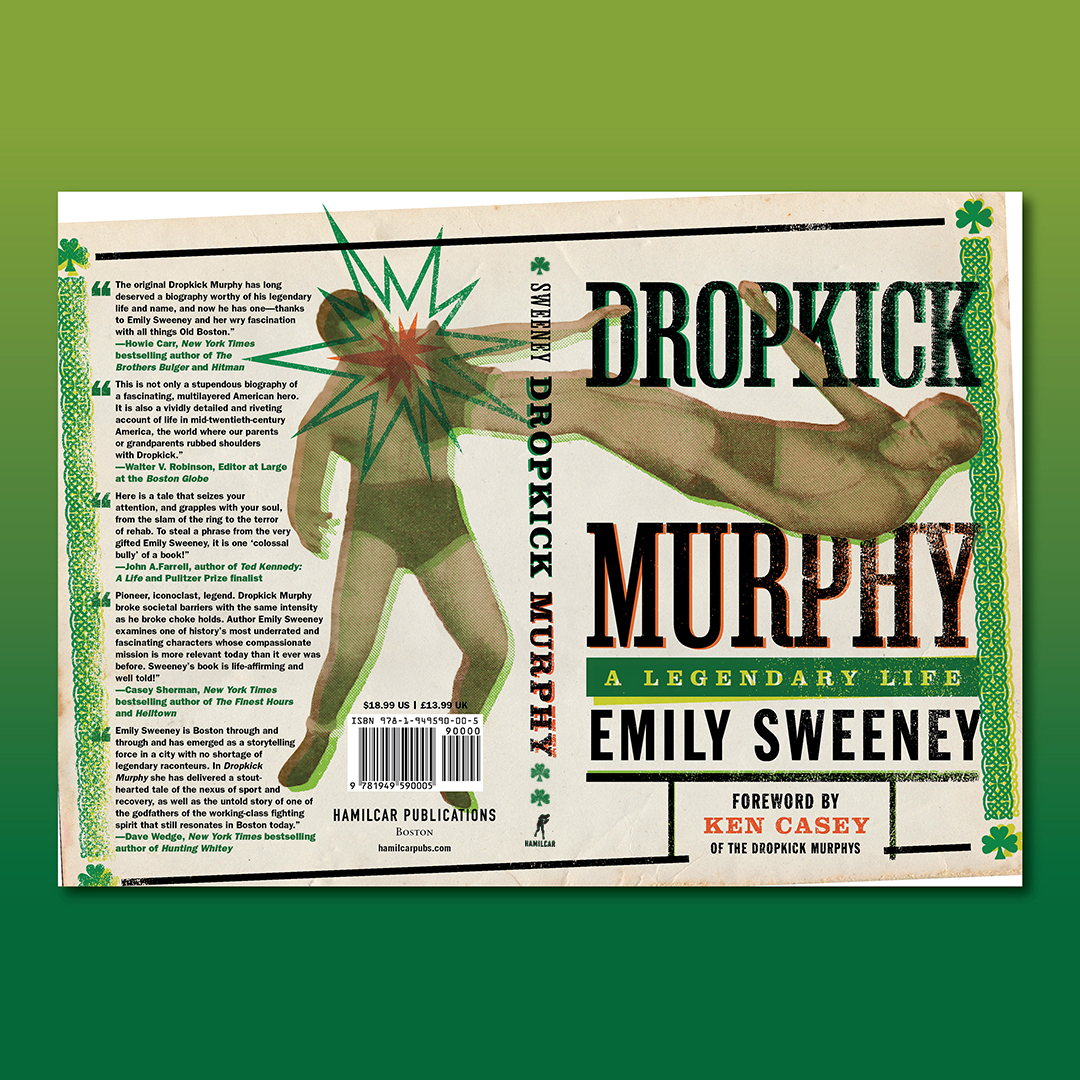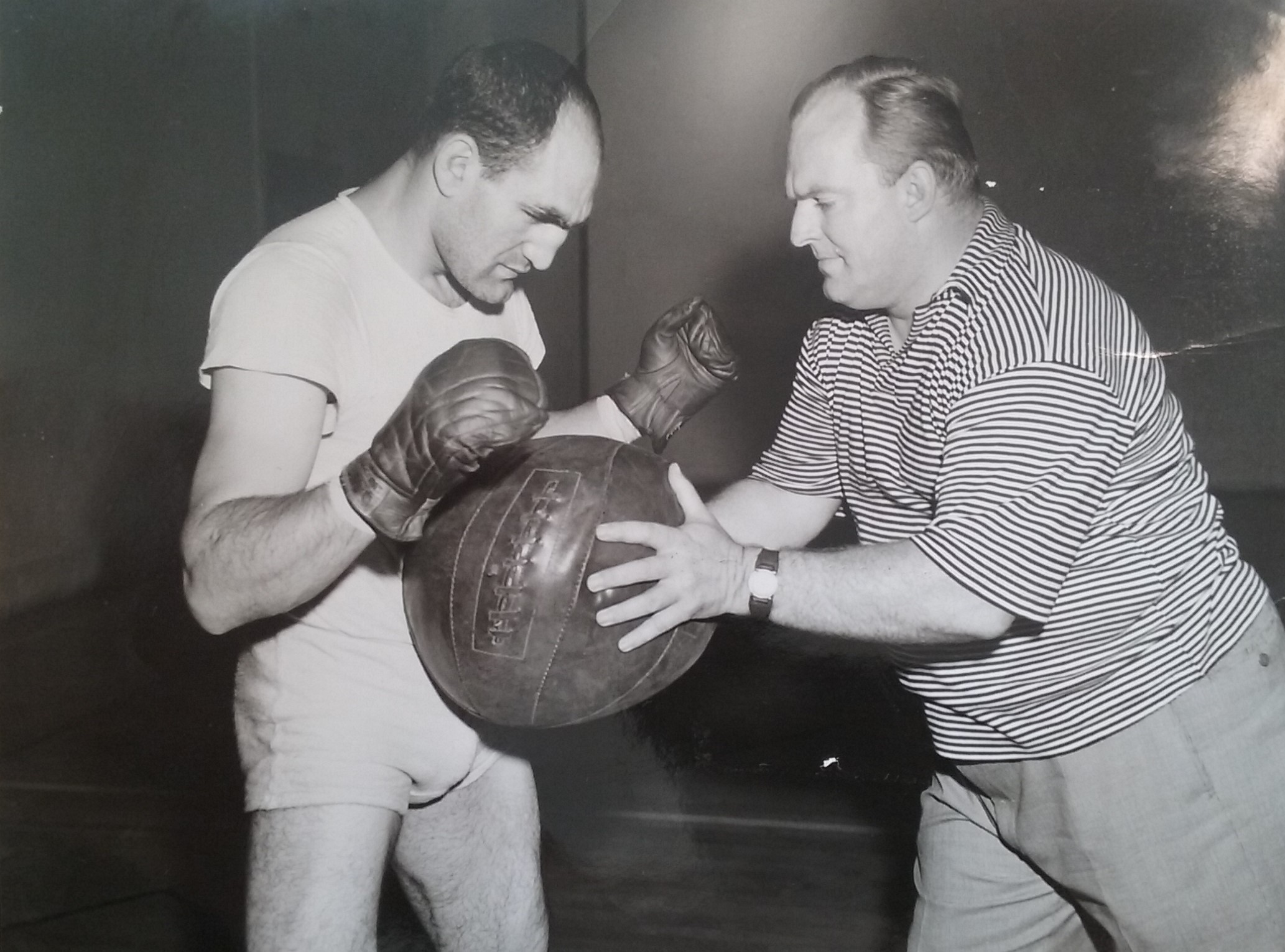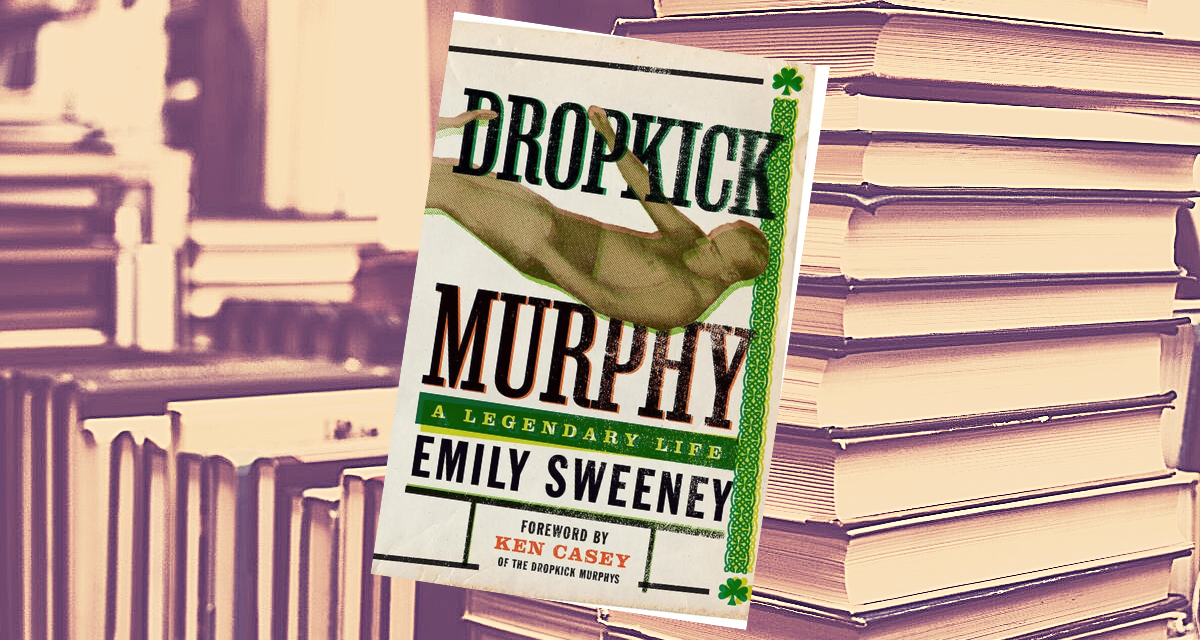When I first heard of the book Dropkick Murphy: A Legendary Life, I was excited, as being a native New Englander, I knew of Dr. “Dropkick” Murphy as the namesake of one our favorite hometown bands and a former wrestler. I didn’t know much about him, beyond that he ran a sanitorium of some type, so this was an unexpected chance to learn more.
Emily Sweeney, the book’s author, also works for Boston’s famed Globe newspaper; she is also published outside the bylines, with Dropkick Murphy joining other titles looking at life in the underbelly of Boston polite society.
Well, after my much awaited copy finally came in the mail (and early, thanks to an Amazon preorder) I collected my thoughts.
One of my strongest compliments of the book is the way it not only introduces casual readers to forgotten names of New England wrestling history, like Ted Germaine, Bibber McCoy, and local Boston promoter Charlie Gordon, but how it brings these names to life with the vivid imagery of the storyteller and the precise, and concise, skills of a professional hack.
The world of professional wrestling was murky and chaotic during the 1930s, and Boston was no different. Murphy was one of many undersized grapplers that had to navigate the difficult waters of wrestling – and especially when the Trust of the greatest wrestling promoters controlled the big money main event scene.
Despite these difficult times, John Murphy successfully established himself as contender for many of the lower weight and regional heavyweight tiles. But Murphy also pushed through the bloated new England wrestling scene to establish himself as a popular attraction, thanks to his patented dropkick maneuver.
What makes the story of Murphy’s professional wrestling career so fascinating is the way Sweeney sets the scene for many of his matches. As someone who spends a fair amount of time reading through the bylines of antique newspapers, the stories found there are often flat, owing to the limitations of the medium.
As a journalist by trade, one would fear Sweeney would fall into a similar trap, but that isn’t the case. Sweeney does an exceptional job creating a cold, oppressive, and vibrant scene for many of the book’s early scenes – something that brings to life the period in a way no newspaper could. [I got to do a Q&A session with her too, where we explored some of those things.]
From the booming voice of “Whitey” Kaunfer welcoming cold patrons to the Old Mechanics Building to the sweaty, bloody, and crowded confines of the Boston Arena dressing room, Sweeney does an exceptional job in weaving a compelling background over which her colorful narrative can really come to life.
To put it less artsy-fartsy, “I enjoyed the writing style,” but I can see why some may not.
The text itself betrays some of the author’s profession, with the content separated into easily digestible – if sometimes too short – burst of compelling characters and stories.
From a personal standpoint, I came into the book expecting to learn a few ancillary details about New England wrestling of the period, but I was impressed from the start.
As a fairly heavy-duty researcher, if I can walk away saying that not only did I gain new knowledge, but I plan to revisit Dropkick Murphy: A Legendary Life again and again as a resource in my own work, than you will definitely find out something new – and some great stories to share friends.

But John “Dropkick” Murphy brought so much more to the table than a legendary leap, and his wrestling career is only one small part of the story. His story is also of kid funding his way through medical school in the midst of the Great Depression and becoming part of a new way of viewing medicine, mental health, addiction, physiology, and more.
Perhaps Dr. John Murphy’s greatest claim to fame was Bellows Farm, a property that, under his watch, would become a trendsetter in how Americans handled addiction.
Bellows Farm operated as a sort of sanitarium where alcoholics could regain their health, with a strict diet and health regimen that bears many of the hallmarks of the modern health retreat. It was a radical change from the norm of the time.
Murphy’s retreat provided secrecy from the prying eyes of the public and the press, who often maligned alcoholics as “weak” and “pathetic drunks” who simply needed to stop drinking and get on with being an adult. Those negative stigmas were part of Murphy’s uphill climb.
The farm was more than a “drying out” place for alcoholics. It also offered assistance for the overweight, as well as first-class athletic facilities, including a state-of-the-art gymnasium. Not only did the lowest of society seek refuge with Murphy, but the elite of the sports world.
And because the clientele was so varied (and Dr. Murphy’s records so guarded), anonymity was assured. Bellows Farm wasn’t just a place, it was really a way of life – and a way of life Murphy happily lived for almost his entire life.
While it’s crazy to still see many vestiges of those narrowminded and damaging portrayals of addiction as a character flaw and a choice, people like Dr. John Murphy (and later, Betty Ford) were at the vanguard of treating mental health with the same care, diligence, and respect as physical ailments.
Addiction continues to damage our families and communities, but the pivotal groundwork of people like Dropkick Murphy deserves highlighting – just as much as his inspiration for one of Boston’s favorite bands.

Dynamite Joe Rindone, a middleweight from Roxbury, came out to Dropkick Murphy’s farm in Acton to train for his fight against Irish Bob Murphy at Braves Field in July 1951. Murphy, a light heavyweight southpaw from California, won the bout and was later named one of Ring Magazine’s 100 greatest punchers of all time. Photo courtesy of David Murphy
If you are considering this book for its wrestling content, you will certainly enjoy what you find. But it’s the other side of the story that is probably more important, because it’s something that gets to heart of our very families and communities. Sweeney does a commendable job of meshing these two narratives into a breezy, effortless read.
Overall, there’s a lot to like about Dropkick Murphy: A Legendary Life, but I somehow wish it would be more. At around 160 pages without the endnotes, it’s a quick read that would be perfectly suited for a flight, weekend in bed, or any situation where you want something enjoyable, engaging, and easy to handle. This isn’t a daunting, scholarly text examining the juxtaposition of Murphy’s dual role as a “destroyer of life” in the ring, and his saving of it outside the squared circle.
It’s a fun read.
So, where’s the problem, right? That’s kind of my point: if you come in with no preconceptions, you’ll have as many regrets as me – zero.
Initially, I wished for a bit “more” – more into his matches, his opponents, heck, even some secret, juicy dirt on a Kennedy, but that’s from the standpoint of someone with an obscure fascination with a tiny subsection of wrestling history. But even there I finished feeling satisfied, despite the book’s brevity.
And maybe brevity is for the best. After all, if I wasn’t so verbose, I could have just written “I enjoyed it.”
Emily Sweeney ’s Dropkick Murphy: A Legendary Life is a fun ride for every true blue (or green, or gold) Bostonian, anyone of the creeping horde of ex-New Englander’s that are permeating every facet of our decent society (myself included), or even if you just like the band but never knew the backstory.
I guess those journalists are pretty clever at what they do after all.
RELATED LINKS
- Q&A with ‘Dropkick Murphy’ author Emily Sweeney
- Buy Dropkick Murphy: A Legendary Life at Amazon.com or Amazon.ca
- SlamWrestling Master Book List


The book gives the reader an overview of his life. So much is left to the imagination that could have been presented. For example, he had seven kids and only one is briefly mentioned. Also, there was precious little about his personal life. His first wife died at age 45 and they had three kids. He then married his late wife’s sister, and they had four more kids but no insight into these relationships at all. All of the seven kids could potentially still be alive, but none were apparently interviewed. I’m guessing that the author wanted to keep the book purely laudatory for his accomplishments. The book was good but could have been so much more, if only having the author assured us that she tried to obtain more information from the family.